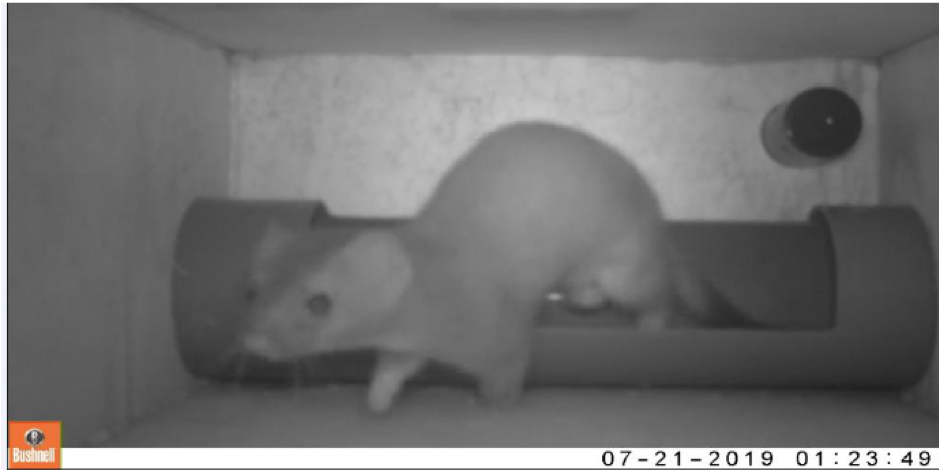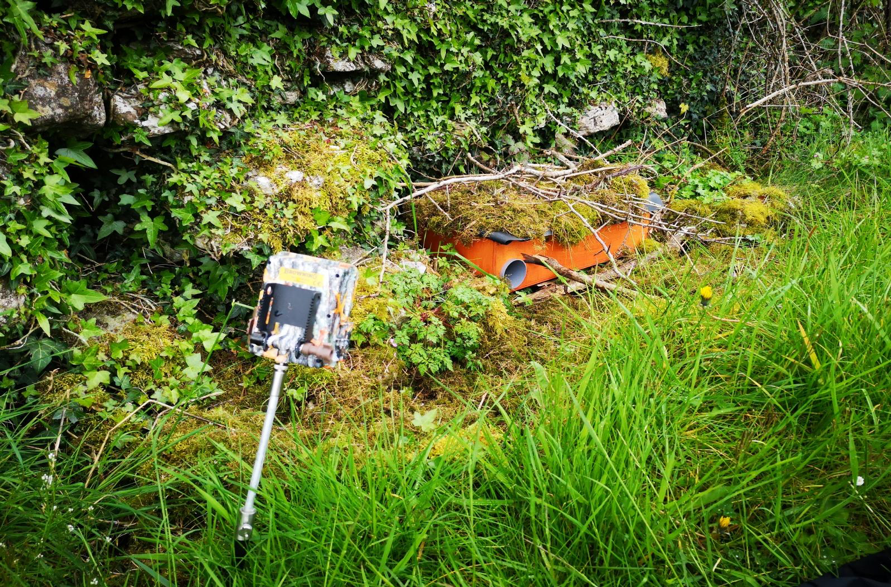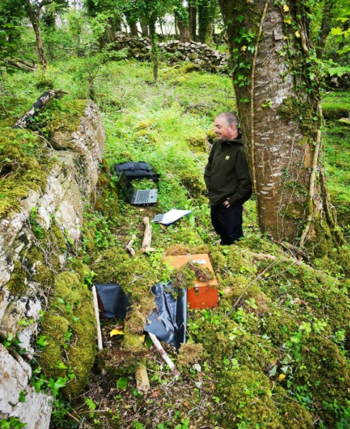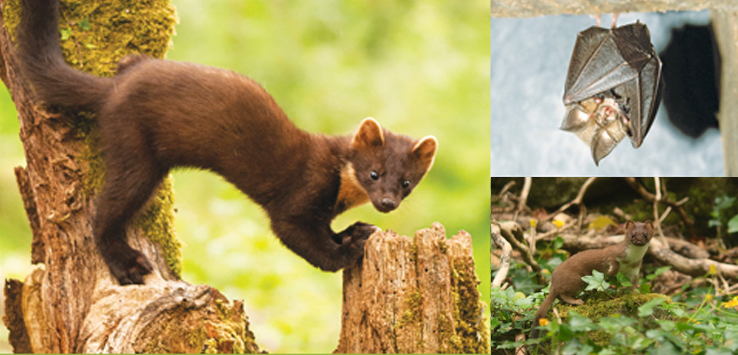News | Blog | The Irish stoat and the Mostela
7th May 2020I was just a few weeks into my Master’s degree in Ecological Management and Conservation Biology at Queen’s University Belfast when we were advised to start thinking about our work placement for the following summer. After class, I decided to call Kate McAney, Head of Conservation Development for Vincent Wildlife Trust in Ireland, to see if she had any ideas. I knew Kate from volunteering with the Trust and I also had worked with her on an undergrad project. She had just received an email about conducting a study on the Irish Stoat similar to a study undertaken by the Trust on stoats and weasels in the UK in 2018 using a device called the ‘Mostela.’ The Mostela is a novel method for detecting stoats and weasels developed by the Dutch Small Mustelid Foundation in the Netherlands.
Great timing, work placement sorted with one phone call! As the year went on and I saw how difficult it was for some of my colleges to secure a work placement, I was glad I had called Kate.
I met up with her and Ruth Hanniffy, Species Conservation Officer – Ireland, in April 2019 to plan the project. We first decided on the general area where the study would take place based on suitable habitat, accessibility and previous stoat records from the National Biodiversity Data centre. This was then narrowed down to a study area of three quadrants which were 4km x 4km. We decided there would be four Mostela units placed in each quadrant.
The Mostela and an external trail camera
We then met with John Higgins, the local National Parks and Wildlife Service Conservation Ranger, who had local knowledge and he put us in contact with people who had suitable habitat and were happy to have the Mostelas on their land for the duration of the study. We drove around each square to pick suitable sites based on good and accessible habitats. A briefing information leaflet was produced to inform the landowners about the project and the land access requirements.
At the end of April Lizzie Croose, Senior Science and Research Officer with Vincent Wildlife Trust brought the Mostelas over from England for the project. Lizzie completed a pilot study in 2018 on stoats and weasels using the Mostela units and had published a paper on the study in The Mammal Society’s Mammal Communications.
We then had a busy day when we went to each of the 12 sites and set up the Mostelas. The Mostelas were placed beside linear features such as hedgerows and stone walls that stoats use to move around the countryside. The Mostelas need to be safe from interference from livestock and people, so this was also taken into consideration when we were laying out the units. Rabbit lure was placed in the Mostela units, trail cameras were then positioned in the Mostelas, batteries were checked and settings on the camera were also checked. External cameras were also put in place at each site to pick up footage from outside the Mostelas. The reason for the external cameras was to pick up footage of stoats that come to the Mostela but do not enter and also to record other mammal species.
The Mostela team
Every week for the next 12 weeks, I visited each Mostela once a week to download the internal and external footage and then viewed all the footage to record stoat and other mammal activity. After the first two weeks, we had gathered footage of quite a few mammal species including pine marten and red squirrel but no sign of the elusive stoat.
Going through the footage was quite time consuming and a lot of patience was required while looking at clip after clip of leaves and grass…but the sight of a pine marten, badger or some other mammal every so often kept me going. Then on the third week, Ruth and I were checking one of the Mostelas at the second last site of the day. After downloading the internal footage, I decided to check a random clip and there it was, our first stoat. We were thrilled to get our first stoat footage because now we knew for sure that the Irish stoat would use the Mostela. The stoat came back to this site most weeks and gave us great entertainment over the summer. It came five different times one week. It seemed like it only visited the Mostela for a roll around and a scratch.
Setting up the Mostela
Downloading footage from the camera
A total of 40 (0.41%) unique stoat clips were recorded during the study of which 23 (0.28%) were external and 17 (1.1%) were internal recordings. The Irish stoat was detected at four out of 12 sites and entered the Mostelas at two of the sites, which proves that the Mostela will be utilised by the Irish stoat and shows potential for future use of the units in more surveys and follow on research.

The Irish Stoat captured on camera inside the Mostela
Overall, 13 different mammal species were recorded during the study. The variety of species recorded shows that the Mostelas could be used to gather data on other species especially small mammals. For example, greater white-toothed shrew and pygmy shrew were recorded at a number of different sites. The Mostela unit could possibly be used as a non-invasive method to monitor areas for pygmy shrew and the invasive greater white-toothed shrew, which are tricky species to study.
I really enjoyed my placement with Vincent Wildlife Trust and I gained great experience by being involved in such an exciting project. I am also very thankful to Kate and Ruth who gave me great help and advice right throughout the project.
Brian Hughes
View footage from the Mostela cameras.










